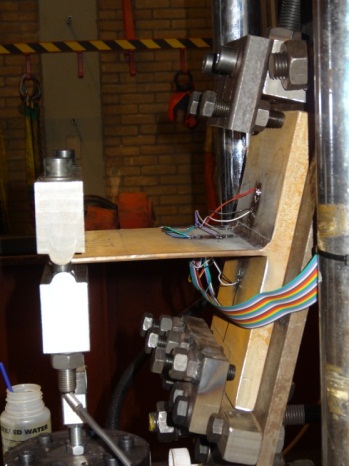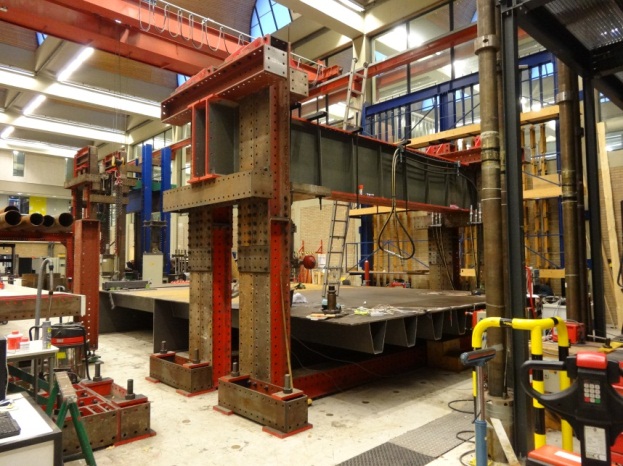Orthotropic Steel Decks
Orthotropic decks of steel bridges in the Netherlands are traditionally made of deck plate thickness of 10 mm or 12 mm (movable bridges). Practical experience has shown that these thicknesses are too small. In the National Annex to EN 1993-2, thicknesses between 15 and 22 mm are proposed, which is based on research on damages in the Brienenoord bridge, Caland bridge and Moerdijk bridges, in relation to the traffic intensity.
For the determination of the fatigue life of the bridge deck and the necessary deck plate thickness, it is necessary to know the classification and crack growth behaviour of the fatigue prone details. Classification has been determined for thickness up to 12 mm, not for the larger thicknesses. In addition, the crack growth behaviour is unknown for the larger thicknesses. The new classification and crack growth behaviour needs to be determined by laboratory tests.
Furthermore, the fatigue life assessment of other details for orthotropic bridge decks problems has omissions, that can lead to unnecessary inspections or a too heavy design of a new orthotropic deck. There is uncertainty in the fatigue classification of welded connections in the trough to crossbeam joints for the following reasons: 1) stress extrapolation methods are unclear; 2) damage criteria such as crack locations with crack growth directions and critical length are unclear. The problems arise from missing background on the fatigue classification of these details, i.e. unclear methodology for the classification, no information on crack growth behaviour, or lack of a clear assessment method for the engineering practice. Next to the execution of additional tests for the classification of details an assessment procedure needs to be set up.
The results of the research (experimental as well as FEM) will facilitate an improved design of new orthotropic bridge decks. The methods can also be applied to a re-evaluation and improvement of existing bridge decks. Moreover, the results of this research can be used for the preparation of an optimal inspection plan for orthotropic bridge decks in existing bridges.
A bridge specimen 5100 x9 400 mm will be tested in the laboratory. The specimen consists of a 20 mm thick deck plate with 8 troughs and 3 cross girders. The material of the specimen is S355. Trough thickness is 6 mm, trough height 350 mm, trough width top-side 300 mm and centre to centre distance is 600 mm. The cross beam thickness is 16 mm, cross beam height 1000 mm with bottom flange 200 x 12 mm. All trough to crossbeam joints consists of continuous troughs. 4 connections fully welded around and 4 troughs with an additional cut out in the cross beam. The throat thickness of the trough to deck plate is 7 mm. Two welding procedures are used: 1) automatic welding (SAW) without preparation of the trough web; 2) manual welding (SMAW) with preparation of the trough web. The gap between the deck plate and the trough web is 0 mm.
Project leader: Weijian Wu.

